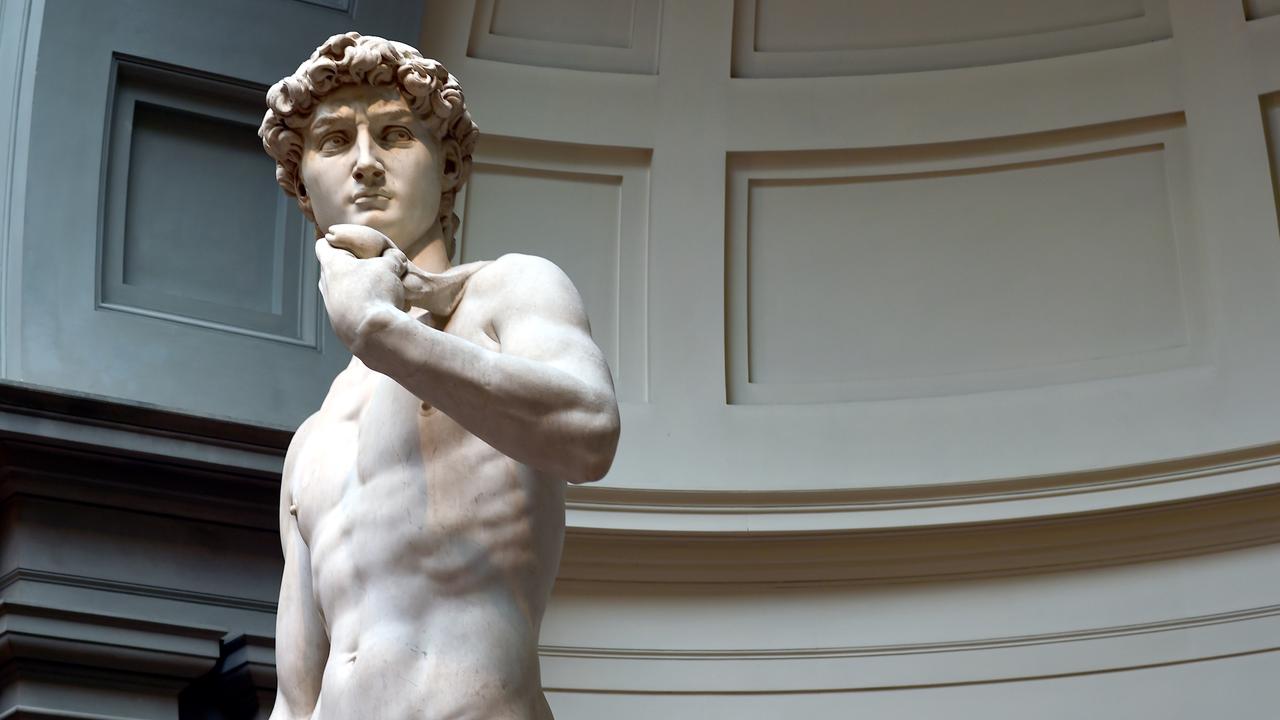Teacher ousted for showing Michelangelo’s nude statue of David
A US teacher was forced to quit after she showed sixth graders photographs of Michelangelo’s famous nude statue of David in an art lesson

READING LEVEL: RED
A US school principal has lost her job after showing sixth graders photographs of Michelangelo’s nude statue of David.
Hope Carrasquilla was forced to resign as principal of Tallahassee Classical School in Florida after parents complained they had not been informed that images of the naked masterpiece* would be shown to their 11- and 12-year-old children. One parent said the work was obscene*.
Ms Carrasquilla showed children photographs of the statue of David, along with Michelangelo’s fresco* The Creation of Adam from the Sistine Chapel ceiling and Botticelli’s Birth of Venus, in a lesson on Renaissance* art.

She was forced to resign by the school’s board last week. The independent school*, which follows a conservative* curriculum*, has a policy requiring parents to be notified in advance about “controversial” topics being taught.
“It saddens me that my time here had to end this way,” Ms Carrasquilla told the local Tallahassee Democrat newspaper.
David, a 5m high marble statue created by Michelangelo between 1501 and 1504, is displayed at the Accademia gallery in Florence, Italy. The work depicts* the Biblical character of David going to fight Goliath armed only with his faith in God.

The gallery’s director, Cecilie Hollberg, defended the principal’s decision to show her students photographs of the masterpiece, saying the 16th-century artwork was a prime example of European and Renaissance art, and in no way obscene.
“He was a naked young man because he was a shepherd boy,” Ms Hollberg said. “David is the work of art par excellence*.”
The mayor of Florence, Dario Nardella, invited Ms Carrasquilla to his city to get an award for teaching children about the artwork.
“I will personally invite the teacher to Florence to give her an award on behalf of the city,” he said.
“Art is civilisation* and those who teach it deserve respect.”

GLOSSARY
- masterpiece: a work that is done with great skill
- obscene: offensive, rude or shocking
- fresco: a painting done on wet plaster on a wall or ceiling
- Renaissance: the period in Europe between medieval and modern times. Beginning in the 14th century in Italy, it was a time of growth and activity in the areas of art, literature and ideas
- independent school: not part of the government school system
- conservative: tending to hold traditional views and not wanting to change existing conditions or ways
- curriculum: the subjects taught at a school and what each subject includes
- depicts: represents or shows
- par excellence: the best of its kind
- civilisation: the process of educating a society so that its culture becomes more developed
EXTRA READING
Abstract painting hung upside down for decades
Marilyn Monroe pop art makes a motza
Fruity sculpture gives locals the pip
Tapestries finally complete Sistine Chapel
QUICK QUIZ
- Which artist created the statue of David?
- What was the principal teaching the children about when she showed them the photographs of David?
- Why were some parents upset by this?
- How long did it take the artist to create David and in which year did he start?
- How tall is the statue of David?
LISTEN TO THIS STORY
CLASSROOM ACTIVITIES
1. Is it fair?
Do you think it is fair that Ms Carrasquilla was forced to resign? Think carefully about the facts and opinions included in the news story and use these to help justify your answer.
Write a letter to the school board to express your agreement with their decision or call for a reversal.
Time: allow 30 minutes to complete this activity
Curriculum Links: English; Ethical Understanding
2. Extension
Renaissance art typically depicts human figures in precise detail. Poses, expression and gesture hold importance. Draw a scene from your own life in a “Renaissance” style.
Time: allow 20+ minutes to complete this activity
Curriculum Links: English; Visual Arts
VCOP ACTIVITY
Right or wrong?
Read the article about the US school principal who lost her job after showing sixth graders photographs of Michelangelo’s nude statue of David. Write a short paragraph (five to seven sentences) about your thoughts on the controversy surrounding the principal’s lesson. Use at least three new vocabulary words from the article in your paragraph.
Paragraph Prompt: Do you think the principal was right or wrong to show her students photographs of Michelangelo’s nude statue of David? Why? Use evidence from the article to support your answer.
Can you enhance your paragraph by focusing on one or more of your VCOP skills? You can use these prompts to help you:
- V – Vocabulary: Identify and use new vocabulary words from the article in your paragraph response. You can use the article glossary to help you or create an extended glossary if you use new words.
- C – Connectives: Use connectives such as “however,” “on the other hand,” or “in addition” to link your ideas together and make your writing more cohesive.
- O – Openers: Use varied sentence openers, such as “Although,” “Despite,” or “As a result,” to make your writing more interesting.
- P – Punctuation: Use punctuation, such as commas, full stops and quotation marks correctly to clarify meaning and make your writing easier to read. Try using more advanced punctuation, such as brackets, dashes, colons and semicolons, if you understand what they are used for.

